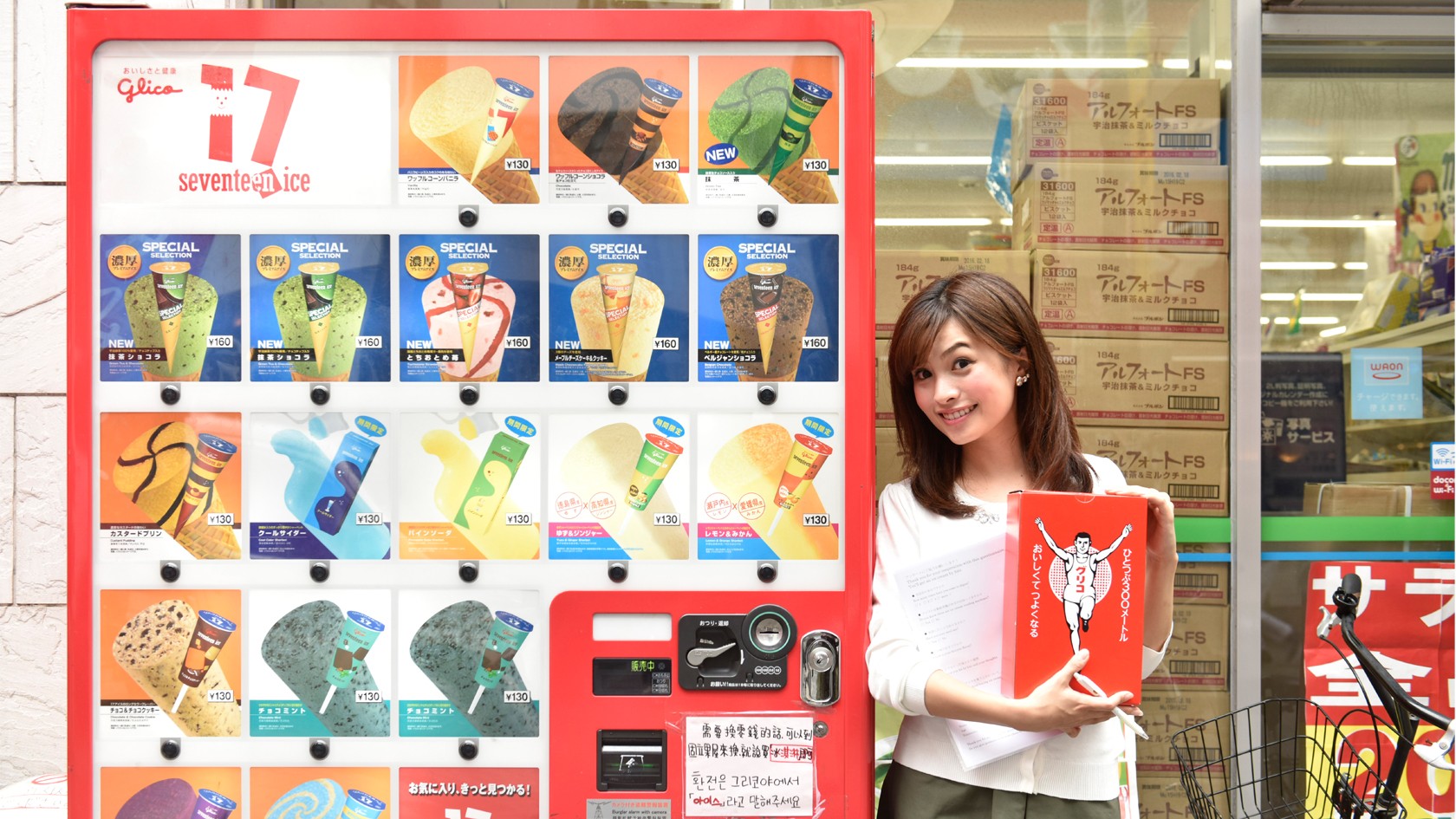Which Seventeen Ice Cream flavor do you like?
We interviewed 20 foreigners on the street! Which Seventeen Ice Cream flavor do you like?
Seventeen Ice Cream is a brand well-known among people who live in Japan, But accually many foreigners in japan loves to eat Seventeen Ice . So, what flavors do non-Japanese people enjoy? We conducted sudden street interviews of foreign tourists visiting Osaka’s Dotonbori area about Seventeen Ice Cream.
Seventeen Ice Cream is a brand well-known among people who live in Japan, But accually many foreigners in japan loves to eat Seventeen Ice . So, what flavors do non-Japanese people enjoy? We conducted sudden street interviews of foreign tourists visiting Osaka’s Dotonbori area about Seventeen Ice Cream.
Seventeen Ice Cream is a brand well-known among people who live in Japan, But accually many foreigners in japan loves to eat Seventeen Ice . So, what flavors do non-Japanese people enjoy? We conducted sudden street interviews of foreign tourists visiting Osaka’s Dotonbori area about Seventeen Ice Cream.
What do foreign tourists trying Seventeen Ice Cream for the first time think?
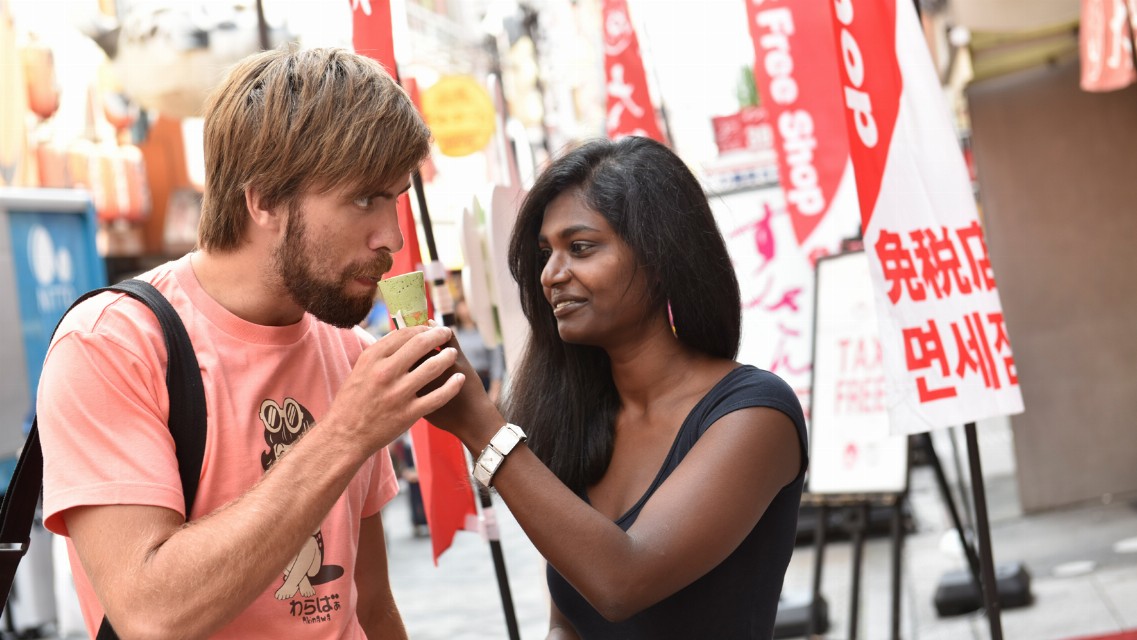
First, we came across this Malaysian couple on their very first trip to Japan. Everything they saw was new to them. Of course, seeing an ice cream vending machine was also new, so they were very excited at its existence! They chose their favorite matcha flavor. “Matcha-flavored food in Japan has a very rich, delicious taste. I’ve grown to love it even more than before,” they said.
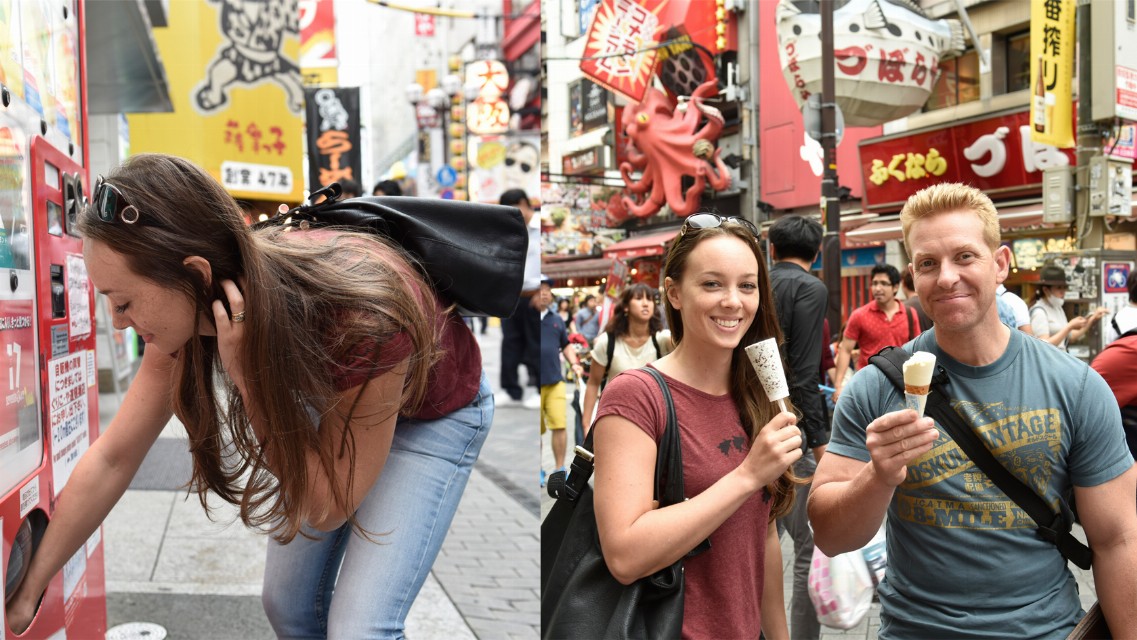
Next, we interviewed an Australian couple. The woman, Bonnie, bought a chocolate mint ice cream. Chocolate mint is very popular in Australia. She seemed very satisfied with Seventeen Ice Cream. “Cool! I want to try it again!” she said.
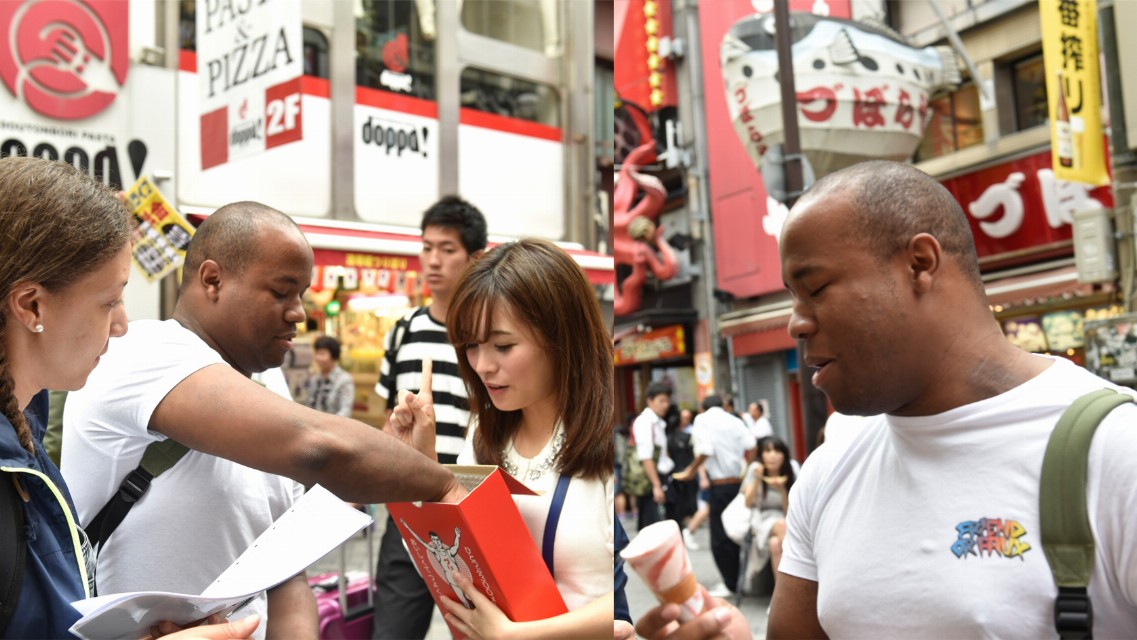
Andy from England decided to try the strawberry flavor even though he usually doesn’t like it. He wanted to try to overcome his dislike by trying Japanese ice cream, but he took one bite and it was obvious that he didn’t like it due to his expression.
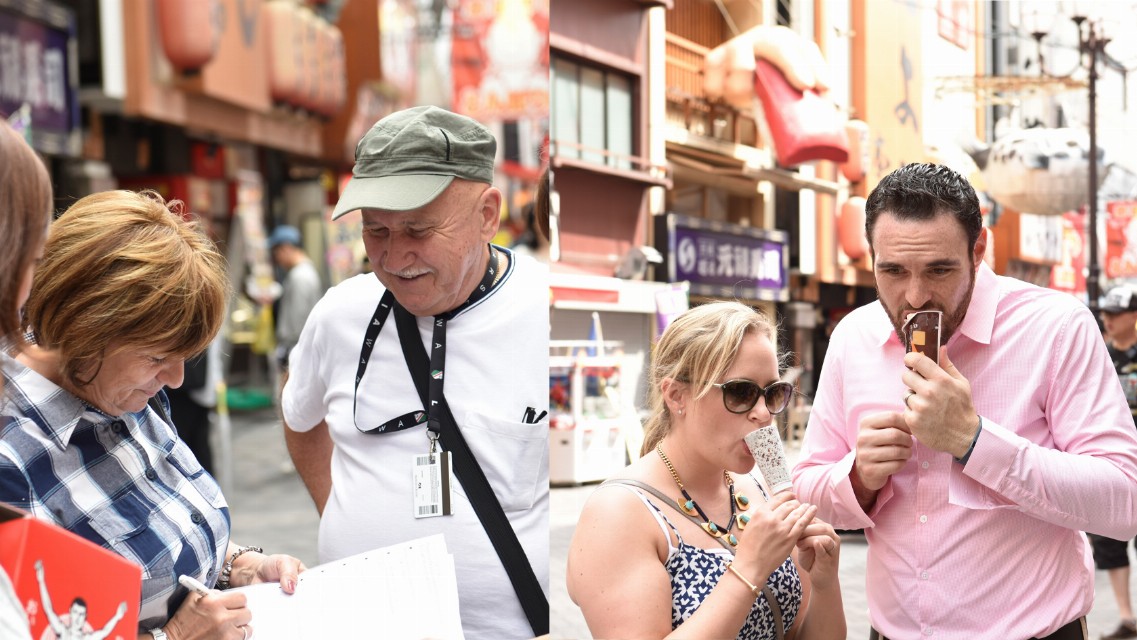
■ Everyone’s favorite flavor, vanilla, squarely sits in first place! Matcha is also highly ranked!
We asked 20 foreigners their favorite flavors:
1 – Vanilla, 6 votes
2 – Chocolate, 5 votes
3 – Matcha, 4 votes
Most people who tried Seventeen Ice Cream for the first time had responses such as “good!” and “tasty!” It’s well-known that vanilla and chocolate flavors are popular with people worldwide, but honestly we were surprised that matcha came in at third.
1 – Vanilla, 6 votes
2 – Chocolate, 5 votes
3 – Matcha, 4 votes
Most people who tried Seventeen Ice Cream for the first time had responses such as “good!” and “tasty!” It’s well-known that vanilla and chocolate flavors are popular with people worldwide, but honestly we were surprised that matcha came in at third.
The surprise at an ice cream vending machine
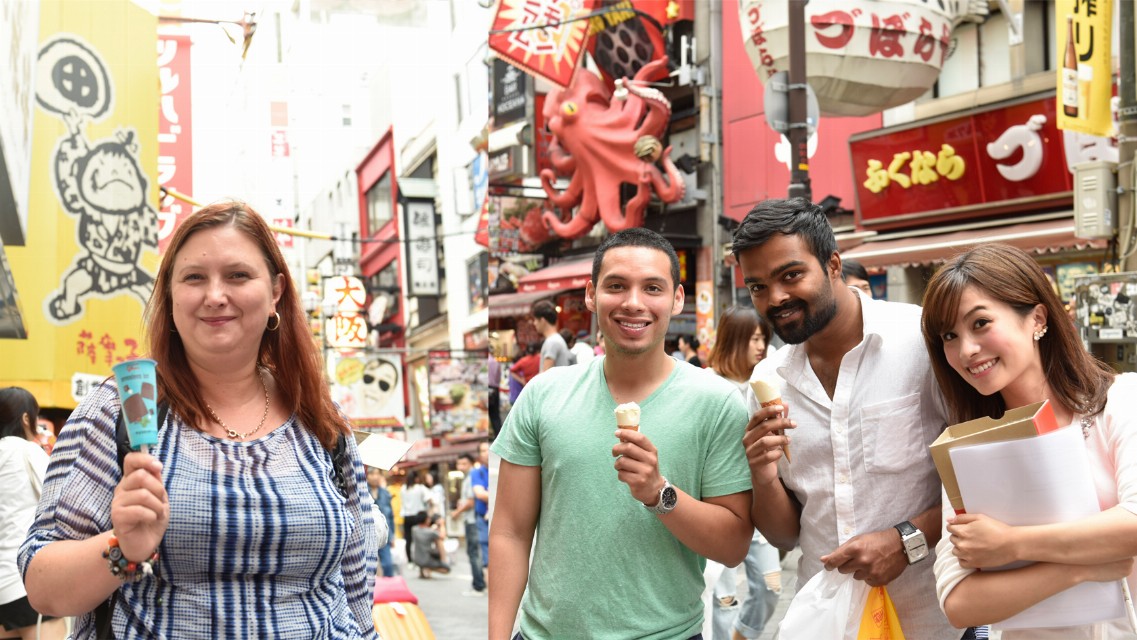
Out of 20 people, only 6 knew about ice cream vending machines. Out of those six, only 2 people knew that Seventeen Ice Cream utilizes them. Not only are there few countries that have vending machines everywhere like in Japan, but many people from around the world couldn’t hide their surprise at an ice cream vending machine. We heard opinions such as “it’s really convenient” and “the balance between the price and quality is really great,” raising their confidence in Japanese quality.
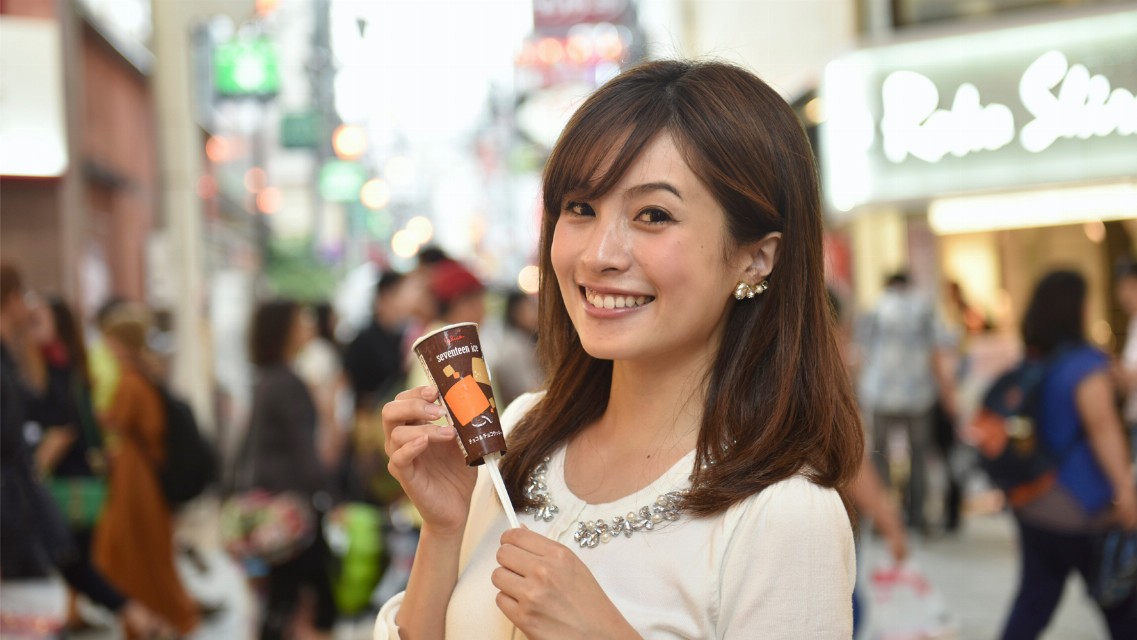
Original source of article: https://www.glico.com/global/feature/seventeenice01
